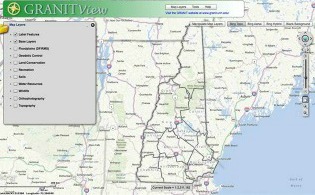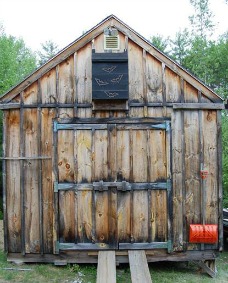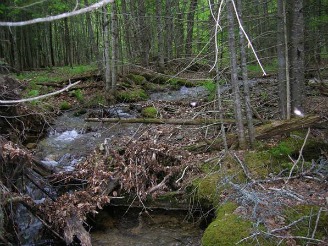|
|

A partnership of NH Fish and Game and UNH Cooperative Extension |
|
New Hampshire's Wildlife Action Plan News and Updates
|
Summer 2012
|
|
|
|
|
Visit takingactionforwildlife.org
| |
|
|
|
|
|
|
|
Become a 2012 Coverts Cooperator!
Are you interested in helping protect New Hampshire's wildlife? Are you an enthusiastic person,
involved in your community? Do you manage your own land to help
wildlife? Are you concerned about the loss of wildlife habitat in New
Hampshire? If you answered "yes" to any of these questions, the New Hampshire Coverts Project Workshop may be right for you!
The
eighteenth annual New Hampshire Coverts Project Workshop will be held
October 3-6, 2012 at the Barbara C. Harris Camp & Conference Center
in Greenfield, NH. The University of New Hampshire Cooperative Extension is currently accepting applicants for the workshop (go to www.nhcoverts.org).
Trainees are needed to learn about wildlife habitat and land
stewardship. Anyone interested is invited to complete an application. Read More
|
|
|
Out With The Old, In With The View! New GRANIT View Website Replaces GRANIT Data Mapper

I was a content user of the GRANIT Data Mapper website for many years. Perhaps you were too. It allowed those of us without access to expensive and complex computer mapping software to view and print computer maps of any part of the state of New Hampshire. Time to say goodbye, because the GRANIT Data Mapper has now been replaced by an updated version called GRANIT View. Read More
|
 Making Habitat Happen: From Gravel Pit to Wildlife Hotspot Making Habitat Happen: From Gravel Pit to Wildlife HotspotAt
first glance an old gravel pit may not look like much. In fact, some
might call these abandoned landscapes ugly, with their exposed soils,
steep banks, old gravel and sand piles, and sparse vegetation. But you
might be surprised to learn that gravel pits can provide very important
habitat for some of our most imperiled species of wildlife. Such was the
case for the Lee Five Corners Reserve, a property owned by the town of
Lee in southeastern New Hampshire. Read More |
 How Can You Help Our Bats? How Can You Help Our Bats? Bat populations have plummeted as a result of white-nose syndrome, which is caused by a fungus
that attacks and damages bats' wings while the bats are hibernating. As
bat wings serve vital metabolic functions - air exchange, water
retention and temperature control - this damage to the tissue does more than just make it harder to fly. WNS has decimated
the populations of two of our eight bat species, the little brown bat
and northern long-eared bat, by about 90%. It will take decades, if
ever, for the populations to rebound. Bats live a long time, 25 years or
so, and are slow to breed. They have one pup per year, and those pups
are subject to all the hazards a young wild animal must survive.
Protecting breeding bats is critical to the survival of these
fascinating creatures. To find out what you can do to help, Read More.
|
|
Wildlife Inventory and Monitoring: 
Taking Action in Your Own Backyard
Birding
experts Don and Lillian Stokes once described how they learned about
wildlife on their property in New Hampshire: "The first thing we did was
buy a couple of comfortable chairs and set them where we could see out
across the landscape." Isn't it true that we are more likely to stop,
look, and listen if we're given an easy opportunity to sit down and
enjoy a view? This is only the first of many tips offered by "A
Landowner's Guide to Inventorying and Monitoring Wildlife in New
Hampshire," published by UNH Cooperative Extension and available for free online. Read More
|
 The Importance of Headwater Streams for Wildlife What
is a headwater stream? Generally, we are talking about small
streams at the upstream extent of a given watershed. In New
Hampshire, headwater streams tend to be relatively high gradient and
cool (or absolutely cold!). However, there are also plenty that start
their journey as small ponds, wetlands or marshes and these tend to be
warmer. Headwater streams
are places where forest and stream habitats converge, leading to high
densities of insects around the streams. Headwater streams are rich and valuable habitats! Read More |
|
Newsletter Editor: Amanda Stone (UNH Cooperative Extension)
Photo Credits:
Frank Mitchell (Banner photo), Malin Clyde (Coverts), Emma Carcagno
(Making Habitat Happen), Emily Brunkhurst (Bat House), John Magee
(Headwater Stream), Amanda Stone (Wetland)
|
|
|
|
|
|
|
|
|